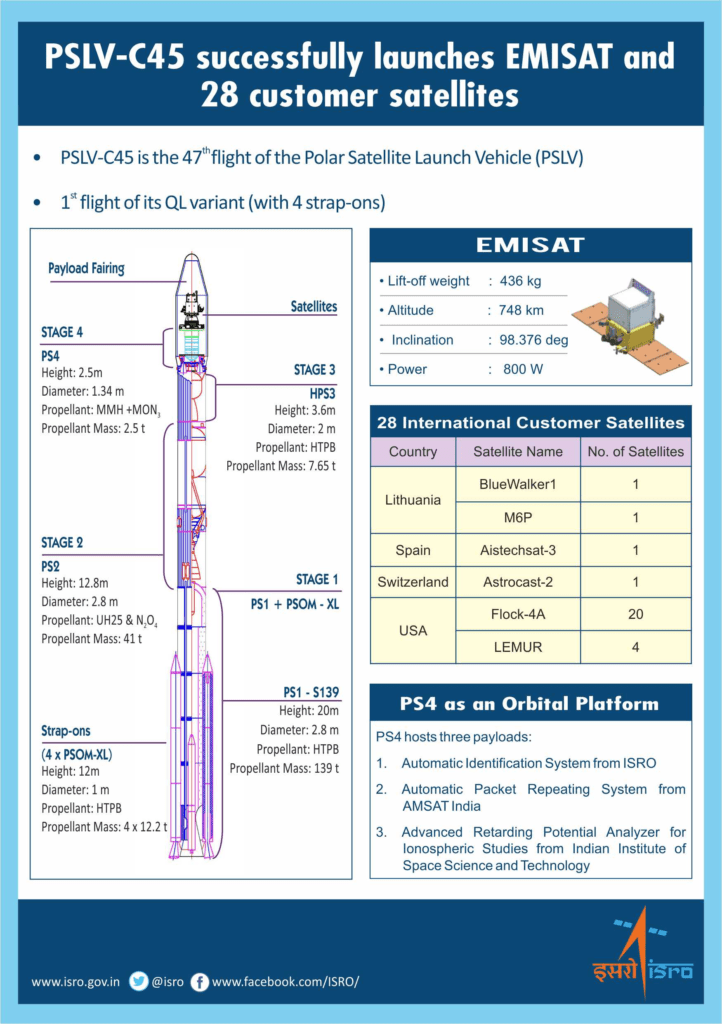- ISRO on April 1, 2019 successfully launched EMISAT and 28 international customer satellites from Satish Dhawan Space Centre (SDSC) SHAR in Sriharikota. It was launched by the India’s Polar Satellite Launch Vehicle (PSLV-C45).
- This flight marked the first mission of PSLV-QL, a new variant of PSLV with four strap-on motors.
- EMISAT was in injected into a 748 km sun-synchronous polar orbit, 17 minutes and 12 seconds after lift-off.
- Following the separation of EMISAT, the vehicle’s fourth stage engines were restarted twice to place the 28 international customer satellites precisely into a sun-synchronous orbit of 504 km height. The last customer satellite was placed into its designated orbit 1 hour and 55 minutes after lift-off.
- About 3 hours after lift-off, the fourth stage (PS4) of the vehicle was moved to a lower circular orbit of 485 km after two restarts to establish it as an orbital platform for carrying out experiments with its three payloads.
- EMISAT: EMISAT is a satellite built around ISRO’s Mini Satellite-2 bus weighing about 436 kg. The satellite is intended for electromagnetic spectrum measurement.
- The 28 international customer satellites, together weighing about 220 kg, are from four countries, namely, Lithuania (2), Spain (1), Switzerland (1) and USA (24). These foreign satellites were launched as part of commercial arrangements.
- The payloads carried by PS4 are Automatic Identification System from ISRO, Automatic Packet Repeating System from AMSAT, India and Advanced Retarding Potential Analyzer for ionospheric studies from Indian Institute of Space Science and Technology.
- According to ISRO Chairman Dr K Sivan this PSLV mission was unique in several ways. It was a four strap-on new variant, the vehicle achieved three different orbits and for the first the PS4 stage is powered by solar panels.
- So far, PSLV has launched 46 national satellites, 10 satellites built by students from Indian Universities and 297 international customer satellites, including the satellites launched on April 1.



